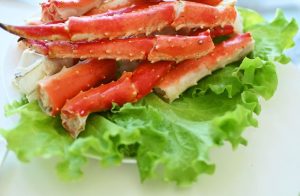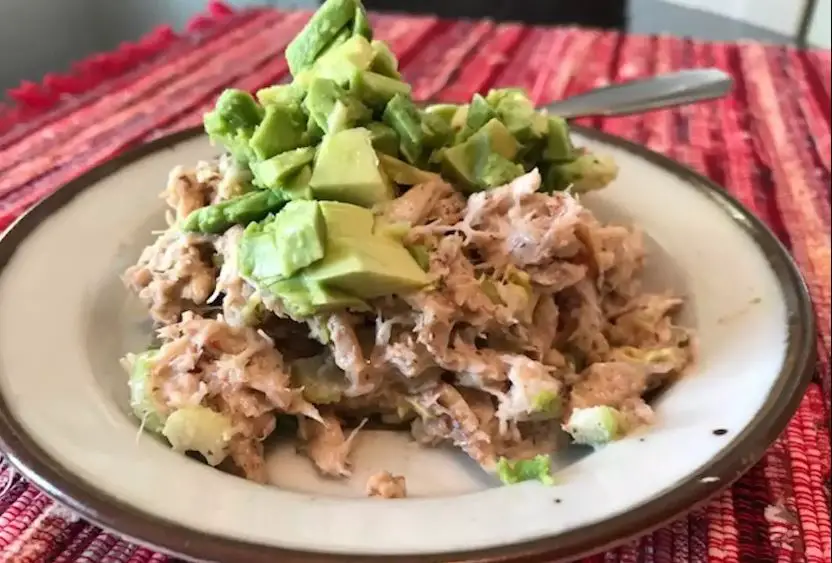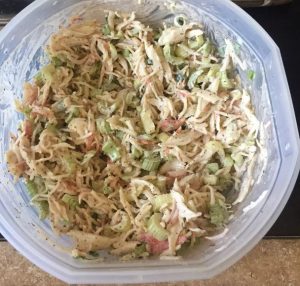Introduction to Crab Salad
Crab salad is a culinary delight that combines the delicate flavors of crab meat with fresh greens, crisp vegetables, and a creamy dressing. This dish is a testament to the versatility of seafood in salads, offering a light yet satisfying meal. Ideal for a variety of occasions, from a quick lunch to an elegant dinner party, crab salad can be tailored to suit different tastes and preferences. The key to a great crab salad lies in the quality of the crab meat and the balance of flavors and textures from the other ingredients. Whether served atop a bed of lettuce, in a sandwich, or as a standalone dish, crab salad is a refreshing and elegant choice that’s sure to impress.
Selecting the Right Crab Meat
Fresh vs. Canned Crab
Choosing between fresh and canned crab meat is crucial in determining the flavor and quality of your crab salad. Fresh crab meat, known for its superior taste and texture, is ideal for a more upscale salad. It offers a sweet, delicate flavor that canned crab meat can’t quite match. However, canned crab can be a convenient and cost-effective alternative, especially when fresh crab isn’t available. When using canned crab, opt for high-quality brands to ensure the best taste.
Types of Crab Meat
Different types of crab meat can be used in a crab salad, each offering a unique flavor and texture. Lump crab meat, consisting of large, whole pieces of crab, is prized for its impressive appearance and delicate flavor. Backfin crab meat, a mix of lump and smaller pieces, is a versatile and slightly more affordable option. Claw meat, darker and with a more pronounced flavor, can add depth to your salad. The choice of crab type can significantly influence the overall character of the dish.
Essential Ingredients for a Perfect Crab Salad
Greens and Vegetables
The greens and vegetables you choose are essential in complementing the crab meat in your salad. A mix of crisp lettuce varieties, like romaine or butter lettuce, provides a fresh, crunchy base. Adding vegetables such as cucumbers, cherry tomatoes, and red onions introduces color, texture, and additional flavors that enhance the crab meat. For a more gourmet twist, ingredients like avocado, asparagus, or artichokes can be included.
Dressing Choices
The dressing for a crab salad should be light yet flavorful, complementing the crab without overpowering it. A classic mayonnaise-based dressing, seasoned with lemon juice, dill, and a hint of mustard, is a popular choice. For a healthier option, a vinaigrette made with olive oil, vinegar, and lemon juice can be used. The dressing can be adjusted with herbs and spices to suit personal preferences, ensuring that it ties the salad together harmoniously.
Pairing with Sides: Best Side Dishes
When it comes to pairing crab salad with side dishes, the goal is to complement the salad’s light and refreshing nature. A classic choice is a warm, crusty baguette or artisanal bread, which provides a delightful textural contrast. For a healthier option, a quinoa or couscous salad can add a wholesome, grainy element. Grilled vegetables, such as asparagus or zucchini, offer a smoky flavor that pairs well with the salad’s freshness. If you’re serving the crab salad as a main course, consider a light soup, like a gazpacho or a clear broth, to start. The key is to choose sides that are not too heavy or overpowering, allowing the crab salad to remain the star of the meal.

Serving and Presentation Tips
Plating Techniques
The presentation of crab salad can significantly enhance its appeal. Consider using a chilled plate to keep the salad fresh. You can mold the salad into a neat, compact shape using a ring mold or a cup for an elegant presentation. Alternatively, for a more casual serving, a bed of greens with the crab salad heaped on top creates a rustic yet inviting look.
Garnishing Ideas
Garnishing is crucial for adding visual appeal and a burst of flavor. A sprinkle of fresh herbs, such as dill or parsley, adds color and freshness. Lemon wedges not only look appealing but also allow guests to add a zesty kick to their salad. For a touch of elegance, edible flowers or microgreens can be used. A light dusting of paprika or a drizzle of a complementary dressing can also enhance the presentation.
The Nutritional Value of Crab Salad
Health Benefits
Crab salad, when prepared with fresh ingredients, is a nutritious dish. Crab meat is low in fat and high in protein, making it a healthy seafood option. It’s also a good source of vitamins and minerals like Vitamin B12, zinc, and selenium, which are essential for various bodily functions. Including a variety of vegetables in the salad adds fiber, vitamins, and antioxidants, contributing to overall health.
Calorie Count
The calorie count of crab salad can vary depending on the ingredients and dressing used. Traditional mayonnaise-based dressings can increase the calorie content, while using a vinaigrette or yogurt-based dressing can keep it lower. The inclusion of vegetables and greens adds bulk and nutrients without significantly increasing calories, making crab salad a potentially low-calorie yet satisfying meal option.



